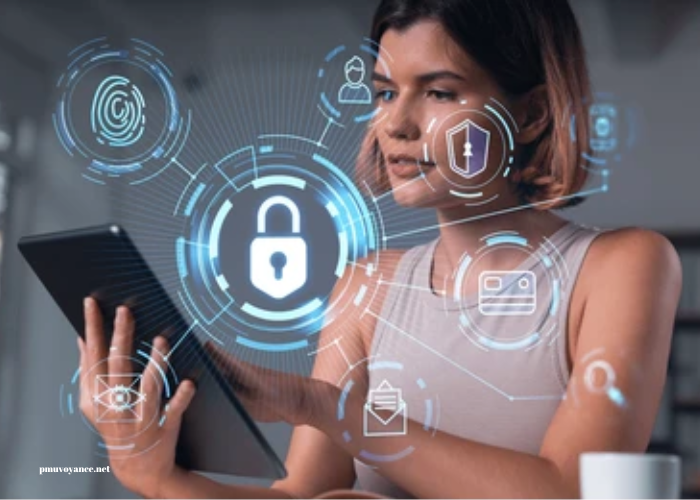In today’s hyper-connected world, where digital interactions and online transactions have become the norm, cybersecurity has never been more crucial. The increasing number of cyber threats and the growing sophistication of cybercriminals underscore the importance of protecting our digital lives. This article explores the essential aspects of cybersecurity, offering practical advice on how to safeguard your personal information, devices, and digital assets.
Understanding Cybersecurity
Cybersecurity refers to the practices, technologies, and processes designed to protect networks, devices, programs, and data from unauthorized access, attacks, or damage. Cybersecurity encompasses several components, including:
- Network Security: Protects the integrity, confidentiality, and availability of computer networks and data using both software and hardware technologies.
- Application Security: Focuses on keeping software and devices free of threats. A compromised application can provide access to the data it is designed to protect.
- Information Security: Protects the integrity and privacy of data, both in storage and in transit.
- Operational Security: Involves the processes and decisions for handling and protecting data assets. This includes user permissions and the management of networks.
- Disaster Recovery and Business Continuity: Involves planning for recovery of IT infrastructure and operations after a cyber incident.
- End-User Education: Training users to understand the importance of cybersecurity and how to protect themselves and their data.
The Rising Threat Landscape
With the rapid advancement of technology, cyber threats have evolved significantly. Some of the most common types of cyber threats include:
Phishing Attacks
Phishing attacks are attempts to deceive individuals into revealing sensitive information, such as passwords or credit card numbers. This is often done through fake emails or websites that appear legitimate. For example, a common phishing tactic involves sending emails that look like they are from reputable companies, asking users to update their account information.
Malware
Malware, or malicious software, includes viruses, worms, Trojan horses, and ransomware designed to disrupt, damage, or gain unauthorized access to computer systems. Ransomware, in particular, has become a significant threat, encrypting files on a victim’s device and demanding payment for decryption.
Man-in-the-Middle (MitM) Attacks
In a MitM attack, the attacker intercepts communications between two parties to steal data or manipulate the information being exchanged. This can occur in public Wi-Fi networks, where attackers can easily access unencrypted data.
Denial-of-Service (DoS) Attacks
DoS attacks aim to make a system or network resource unavailable to its intended users by overwhelming it with traffic. This can cause legitimate users to be unable to access the services they need.
Insider Threats
These threats come from individuals within an organization, such as employees or contractors, who misuse their access to information and systems for malicious purposes.
Essential Cybersecurity Practices
Protecting your digital life requires a proactive approach to cybersecurity. Here are essential practices to help you safeguard your information:
Use Strong, Unique Passwords
Creating strong passwords is one of the simplest yet most effective ways to protect your accounts. Use a combination of upper and lower case letters, numbers, and special characters. Avoid using easily guessed information, such as birthdays or names. Additionally, use different passwords for each account to minimize the risk.
Enable Two-Factor Authentication (2FA)
Two-factor authentication adds an extra layer of security by requiring not only a password but also a second form of verification, such as a text message code or authentication app. This makes it more difficult for attackers to gain unauthorized access, even if they have your password.
Keep Software and Devices Updated
Regularly updating your operating system, applications, and antivirus software is critical to protecting against known vulnerabilities. Many updates include security patches that address potential exploits.
Use a Virtual Private Network (VPN)
A VPN encrypts your internet connection, making it more difficult for attackers to intercept your data, especially on public Wi-Fi networks. Using a VPN can help protect your online activities and enhance your privacy.
Be Cautious with Emails and Links
Always verify the source of emails before clicking on links or downloading attachments. Look for signs of phishing, such as poor spelling and grammar, unusual requests, or unfamiliar sender addresses. Hover over links to see the actual URL before clicking.
Secure Your Home Network
Change the default password on your router and use WPA3 encryption to secure your Wi-Fi network. Regularly review connected devices and disable any that you do not recognize. Consider setting up a guest network for visitors to keep your primary network secure.
Backup Your Data Regularly
Regularly backing up your data can help you recover your information in case of a cyber incident. Use a combination of local backups (external hard drives) and cloud backups to ensure redundancy.
Educate Yourself and Others
Staying informed about the latest cybersecurity threats and practices is crucial. Consider taking online courses or attending workshops on cybersecurity. Share this knowledge with friends and family to help them protect their digital lives.
The Role of Businesses in Cybersecurity
While individuals must take responsibility for their digital security, businesses also play a crucial role in cybersecurity. Organizations should implement comprehensive cybersecurity policies and practices, including:
Employee Training Programs
Regular training sessions can help employees recognize and respond to cyber threats, reducing the risk of successful attacks.
Incident Response Plans
Having a clear incident response plan in place allows organizations to respond swiftly and effectively to cyber incidents, minimizing damage and recovery time.
Regular Security Audits
Conducting regular security audits can help identify vulnerabilities within the organization’s systems and networks, allowing for timely remediation.
Investing in Cybersecurity Tools
Businesses should invest in cybersecurity tools, such as firewalls, intrusion detection systems, and antivirus software, to enhance their security posture.
The Future of Cybersecurity
As technology continues to evolve, so will cyber threats. The rise of artificial intelligence (AI) and machine learning is transforming the landscape of cybersecurity, both for attackers and defenders. While cybercriminals are leveraging AI to automate attacks and analyze vulnerabilities, cybersecurity professionals are using AI to improve threat detection and response times.
Furthermore, the increasing adoption of the Internet of Things (IoT) presents new challenges, as more devices connected to the internet increase the attack surface. Ensuring the security of these devices will require robust standards and protocols.
The Importance of Cybersecurity Awareness
In a world where digital interactions are inevitable, fostering a culture of cybersecurity awareness is paramount. Individuals and organizations alike must recognize that cybersecurity is not solely the responsibility of IT departments but requires collective effort.
Conclusion
Protecting your digital life is an ongoing endeavor that requires vigilance, education, and proactive measures. By understanding the cybersecurity landscape and implementing essential practices, individuals and businesses can significantly reduce their risk of falling victim to cyber threats. As technology continues to advance, staying informed and adapting to new challenges will be key to safeguarding our digital lives for years to come.
In this digital age, it’s not just about protecting information; it’s about securing our identities, our finances, and ultimately, our way of life. By embracing a proactive approach to cybersecurity, we can navigate the digital world with confidence and resilience.



